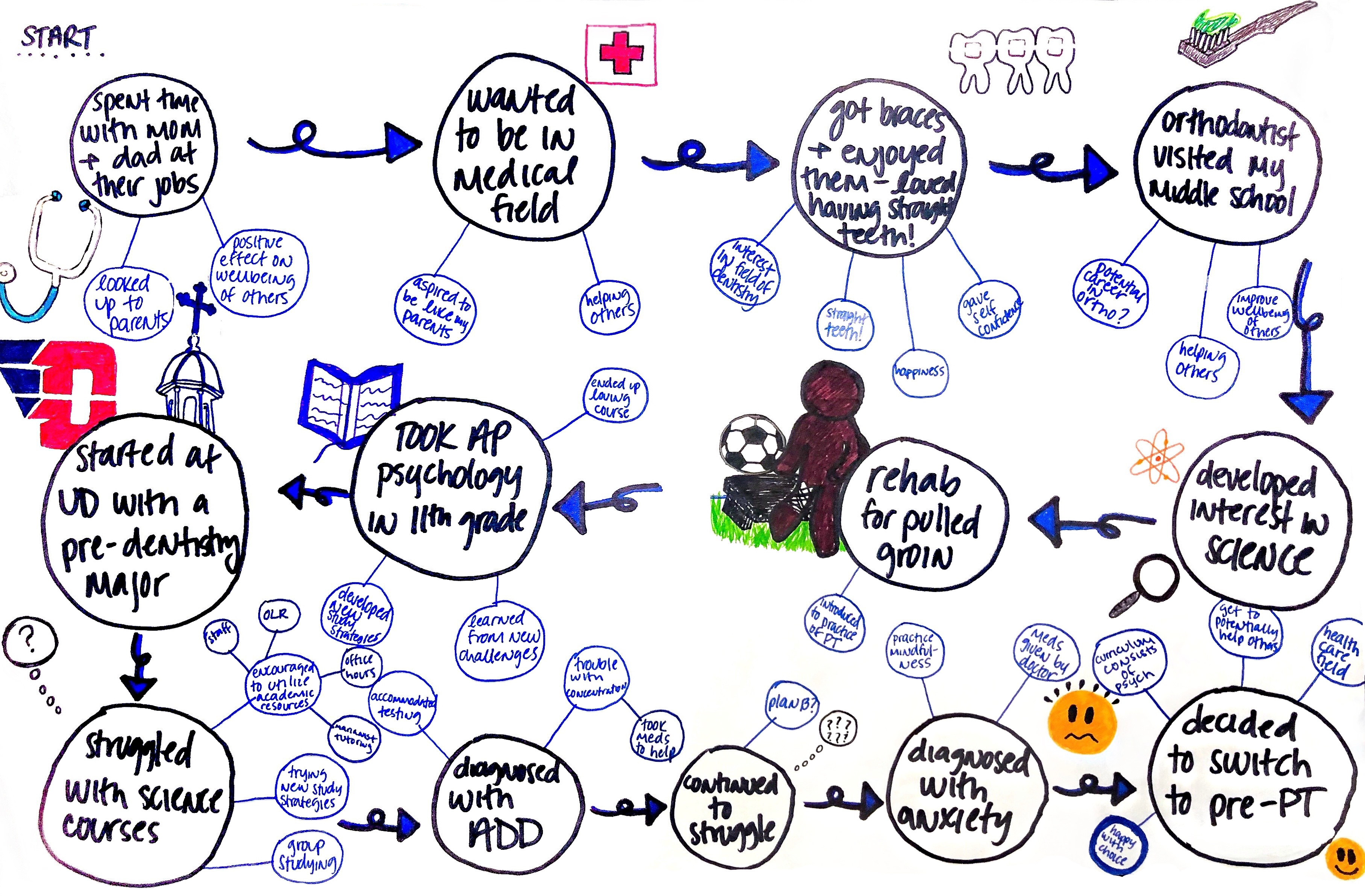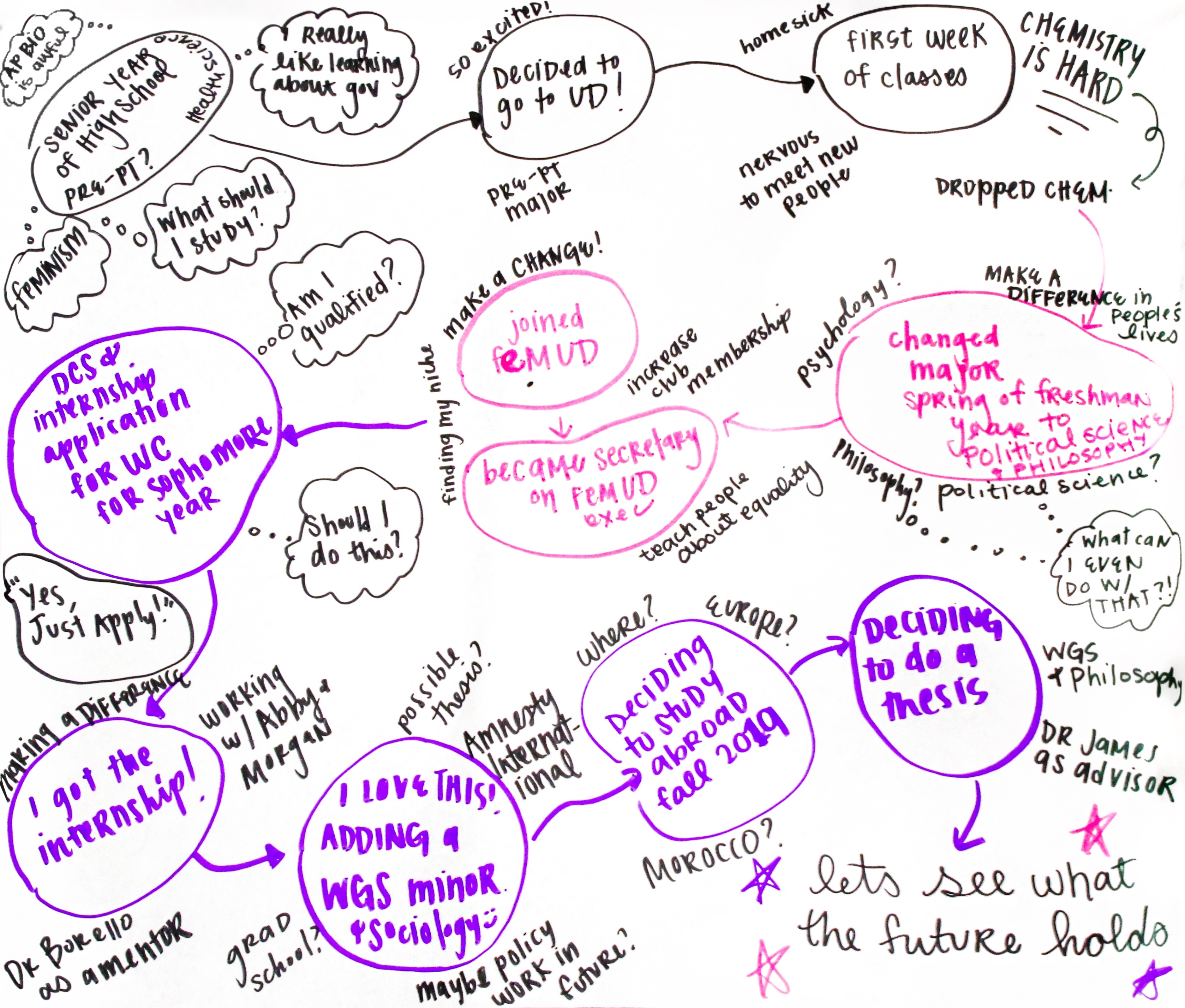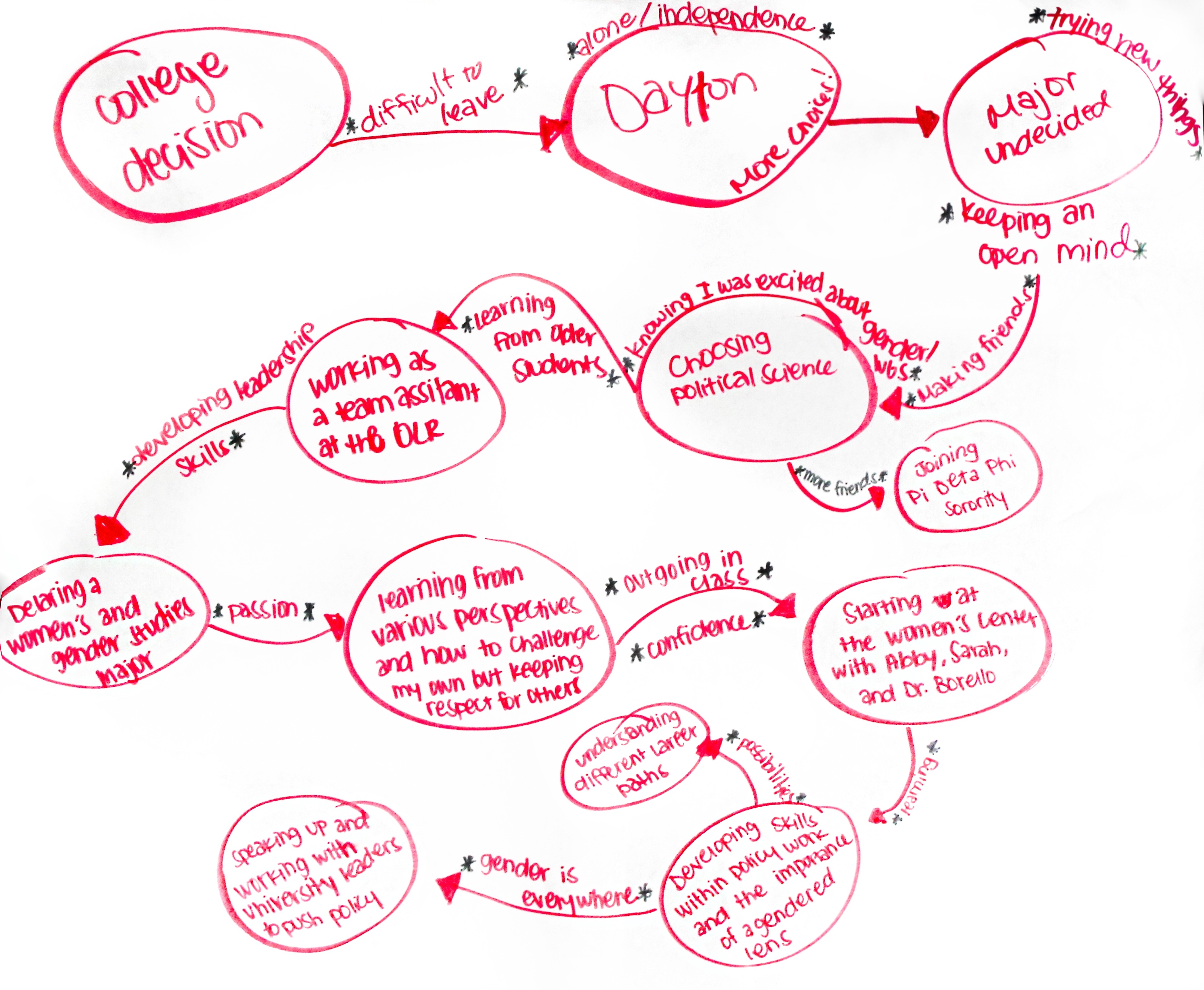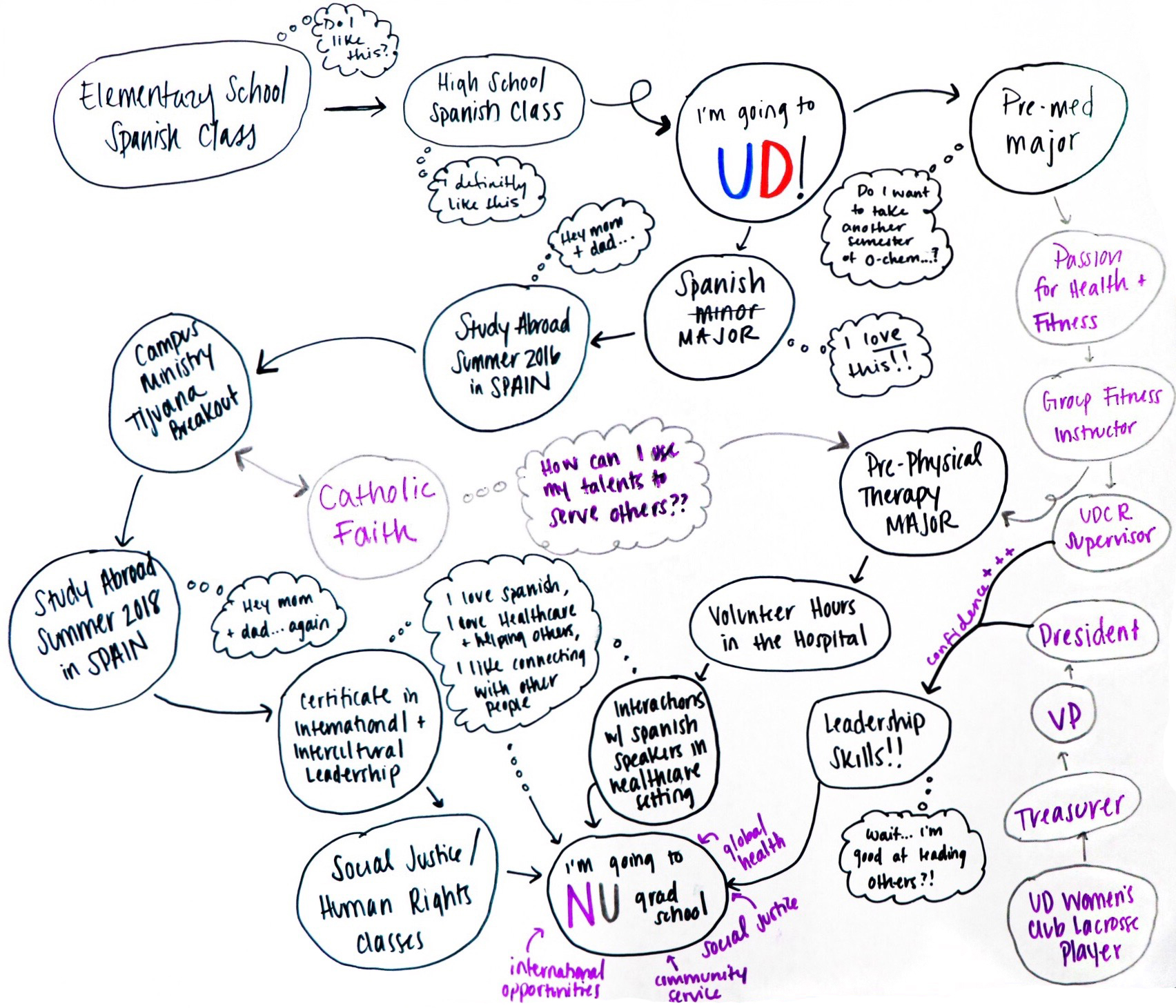Experiential Learning at UD
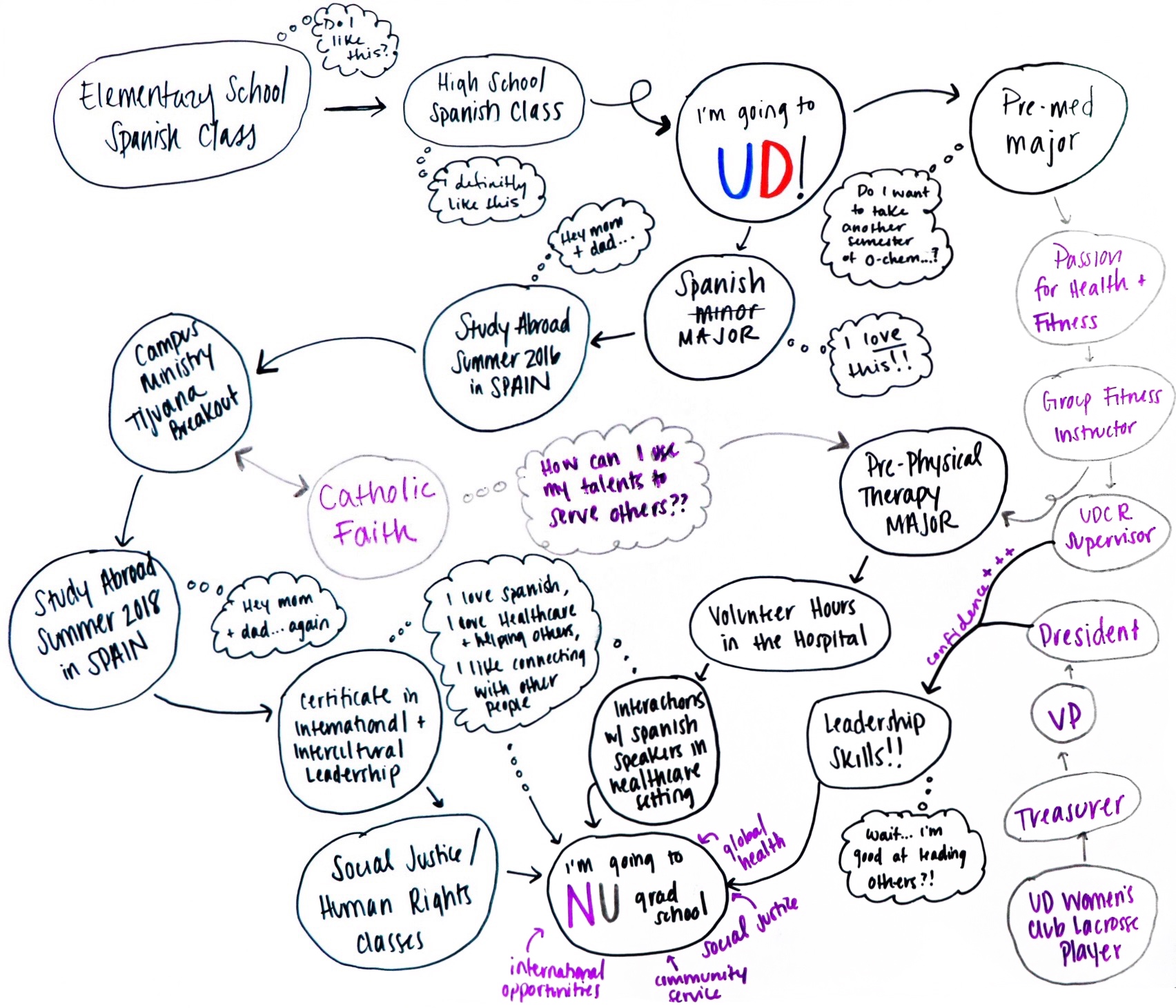
What is a "Learning Journey Roadmap?" and How to Implement One in Your Course or Program
By Karen Velasquez, Director of Experiential Learning
Students participate in many different courses, programs, activities, and experiential learning experiences during their time at UD. They are asked to connect the dots among these experiences when it comes time to write a cover letter for an employer or complete a reflection assignment in a capstone course, for example. I wondered what would happen if I we asked students to visualize their educational journeys on paper in the form a “roadmap?” As an anthropologist of education interested in how people represent their learning experiences in diverse ways, I wanted to find a different medium for students to creatively express their unique stories (beyond text or oral history formats).
As part of our monthly Experiential Learning Lab workshops, The Office of Experiential Learning (OEL) asked over a dozen students from different majors and backgrounds to draw out their learning journeys in the form of personal roadmaps to illustrate key learning moments they’ve had along the way. Students use markers, colored pencils, and a large piece of paper to visually represent their unique path through college. They write down key courses and programs they’ve participated in, as well as the skills and lessons they’ve learned through those experiences, which led them to next steps in their personal journey. (See roadmap gallery below)
Students were also asked to write a text narrative as an accompaniment to their roadmaps. After drawing and writing, students were asked to share their roadmaps and narratives with peers and OEL student employees, which resulted in deep and meaningful dialogue. I implemented this activity in EL Lab workshops with students from different majors and backgrounds, who were at different stages in their college journey (sophomores through seniors, mostly). The roadmap activity was also adopted by an instructor from the Office of Learning Resources, in his course for students on academic probation.
Key findings from the learning journey roadmaps:
- Catching student at different stages of their development is a beneficial learning experience. We can ask students to return to an earlier roadmap and reflect on what they drew in the past, to see how they have grown and transformed over time.
- Students enjoy having a map of their experiences on paper; most remarked that they had never seen their educational journey displayed in such a way.
- Time to reflect and engage the senses through drawing activities such as this one are beneficial particularly for busy students who may not take the time out of their normal daily schedules to take a step back and appreciate all they have accomplished.
- We can see how individuals learn in diverse ways. Sometimes they get involved in activities through friends, or are encouraged by their professors and other mentors. Through these roadmaps we gain an appreciation of the often spontaneous or unplanned moments of learning which are unique to each student and which can result in drastic changes in direction.
- Prompting students to include challenging moments can also be beneficial for learning. Sometimes we skip over the difficult times instead of taking a moment to think about what we learned from those challenges, and how they’ve shaped us.
Students are not the only ones who may benefit from creating a visual representation of their journeys. We know that the process of finding our path(s) can be a lifelong one, and we continue to learn how to navigate different opportunities and challenges well beyond college years. These roadmaps can help us understand the choices we’ve made in more tangible ways, and highlight the realizations we’ve had through our vocational journeys.
To see the full learning journey roadmap and roadmap narrative instructions click here>>.
For more examples of student roadmaps and narratives click here>>.
For a video illustration of students drawing and explaining their roadmaps, see Sophia Williamson’s roadmap here>> and Christopher Miller’s roadmap YouTube video here>>.

